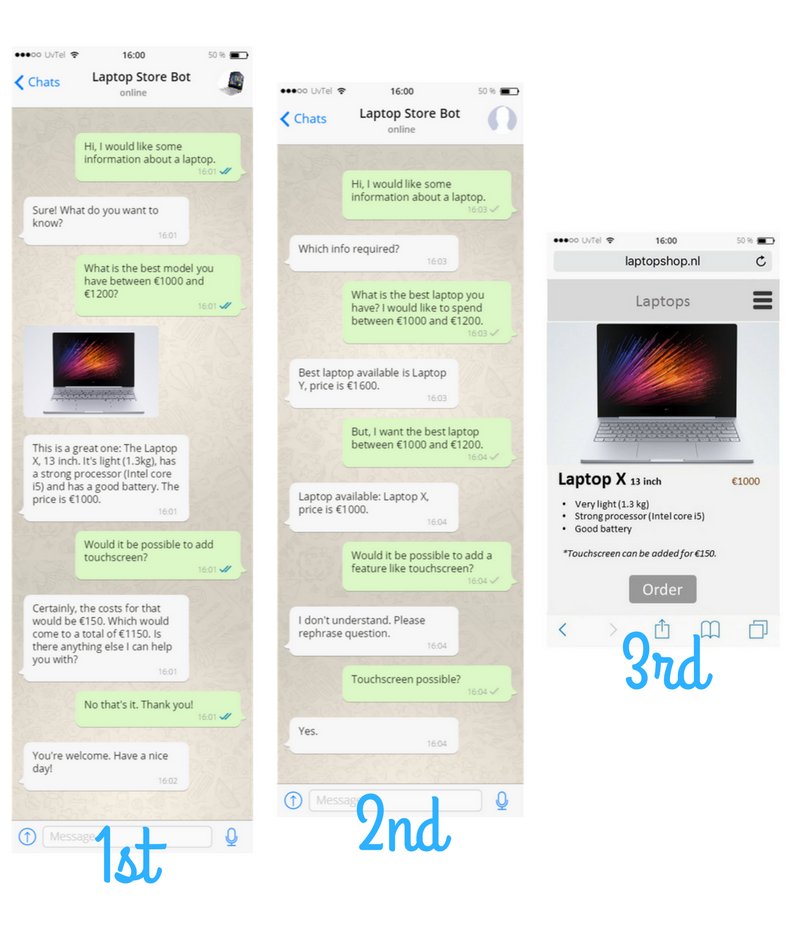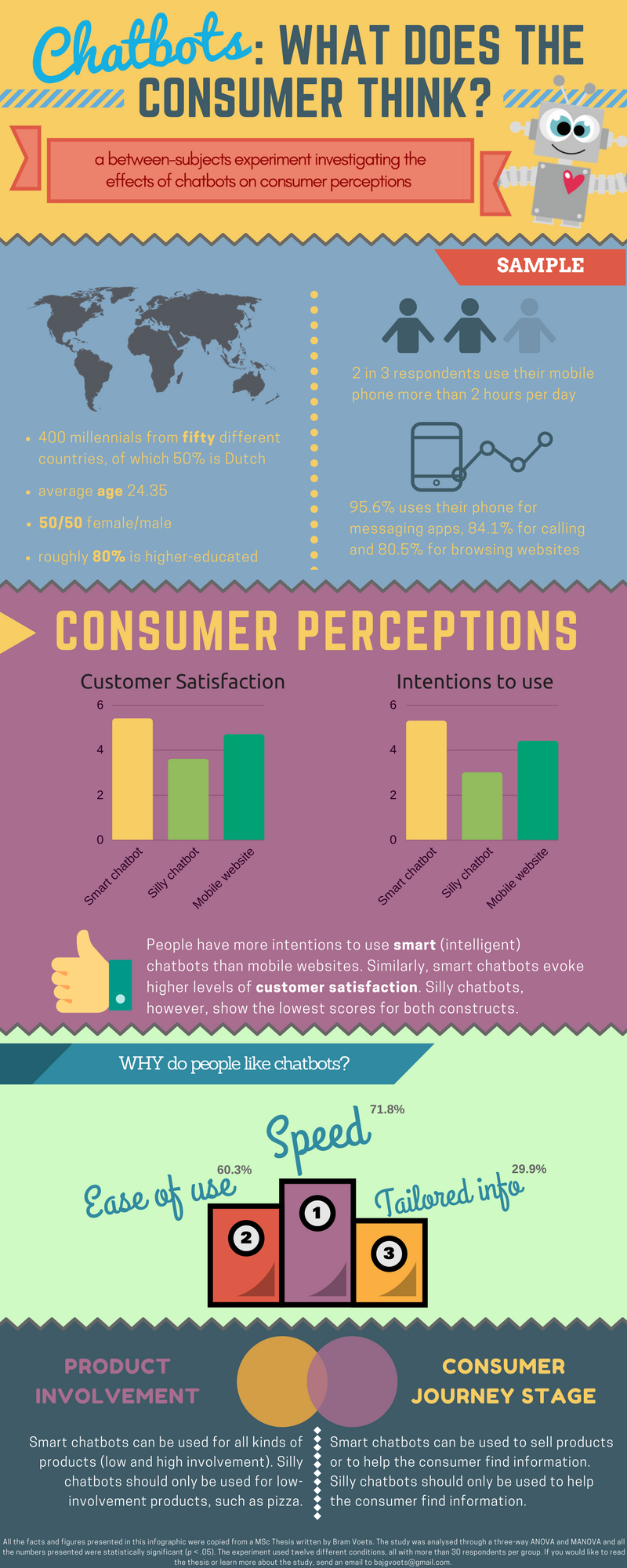One of those technologies explored revolves around chatbots. A chatbot is an artificial intelligence system that is able to manage a natural conversation with a user, and that has a sound knowledge base to interact with that user. More than a fad, Silicon Valley giants are investing heavily in AI software fueling chatbots and 2 in 3 millennials have interacted with chatbots.
Although I have yet to come across a chatbot which is going to change the way I use the internet dramatically, more than 34,000 eclectic chatbots have been integrated on Facebook Messenger already. Examples include Hi Poncho (giving information about the weather) and Unicorn Bay (which gives you information regarding stocks when you type in the company name or ticker). Some of the more popular chatbots include voice recognition systems such as Siri, but also Google Assistant and Amazon’s Alexa — the latter two are compared in this video.
My contributions
The last five months, I have been playing with chatbots and its developer software (API.ai, WIT.ai, Motion.ai, & Chatfuel among others) with three other students, as well as researching the possibilities for commercial chatbots for a digital marketing company such as Greenhouse Group. I studied whether people are willing to embrace and recommend chatbots and if it would lead to higher customer satisfaction levels, compared to when using merely a mobile website. A while back, my peer Daan and I already wrote a blog in which we shared our exploratory findings about the relationship between chatbots and customer satisfaction.

After, I performed an experiment in which over 400 millennials from fifty different countries were led to one of the twelve different conditions used. Four groups saw a screenshot (1st, see example below) of a conversation with a sophisticated (smart) chatbot, whereas four other groups would see a screenshot (2nd, see example below) with a less sophisticated (silly) chatbot. The final four groups saw a screenshot (3rd, see example below) from a mobile website, being the control variable. Also, I made a distinction between different products (pizza or laptop) for which chatbots could be used and distinct consumer decision journey stages (information gathering or moment of purchase).

After seeing these screenshots, all respondents were asked a similar set of questions measuring likeability, trust, ease of use, etc. Based on the input from the respondents, some statistical analyses (M/ANOVA) followed. Below, an infographic illustrates the most important (and statistically significant) results from the study…

As seen in the infographic, the study surfaced fundamentally that people are genuinely willing to use and recommend chatbots, more than mobile websites. This only holds for sophisticated chatbots. Silly chatbots are still evoking less customer satisfaction compared to mobile websites. Also, customer satisfaction is higher for intelligent chatbots compared to mobile websites. Now, I am well aware of the fact that we are still in the beginning phase and that mobile websites or apps may still be more functional for now. Google Play opened its doors only in 2008, and Microsoft CEO Satya Nadella has already said that bots are the new apps.
Bots are the new apps – Satya Nadella
I think that every bussiness should consider building or buying a chatbot soon: Gartner projects that over 80% of consumer interactions will be managed without a human by 2020. If that does not quite do it for you, the following may… Forbes, Business Insider, Financial Times, Venturebeat, Wall Street Journal, and TechCrunch among many others (Google shows 2.7mio results for chatbots, of which 1.2mio were added last year) have published articles/blogs about chatbots and agree on its bright future.
So?
To answer the question “Are we willing to embrace Chatbots?” I’d say yes! Be ahead of the game and ensure you will integrate a smart chatbot before your competitors do. Whether you are a restaurant selling pizzas or an electronics website providing information about laptops, your customers are probably willing to talk to your chatbot, as long as it is smart enough.
You can download a PDF version of the infographic here. If you require some more information about my experiment, please get in touch. By the way, you can also get in touch with my personalized bot (which I built in a few hours and is therefore really quite silly). The BBC recently published an article about a 14-year-old who developed a more sophisticated bot, which helps you to schedule and remind you about your homework. If after reading this you feel like building your own chatbot, let me know and I will try and help you! 🙂







Leave a Reply
You must be logged in to post a comment.